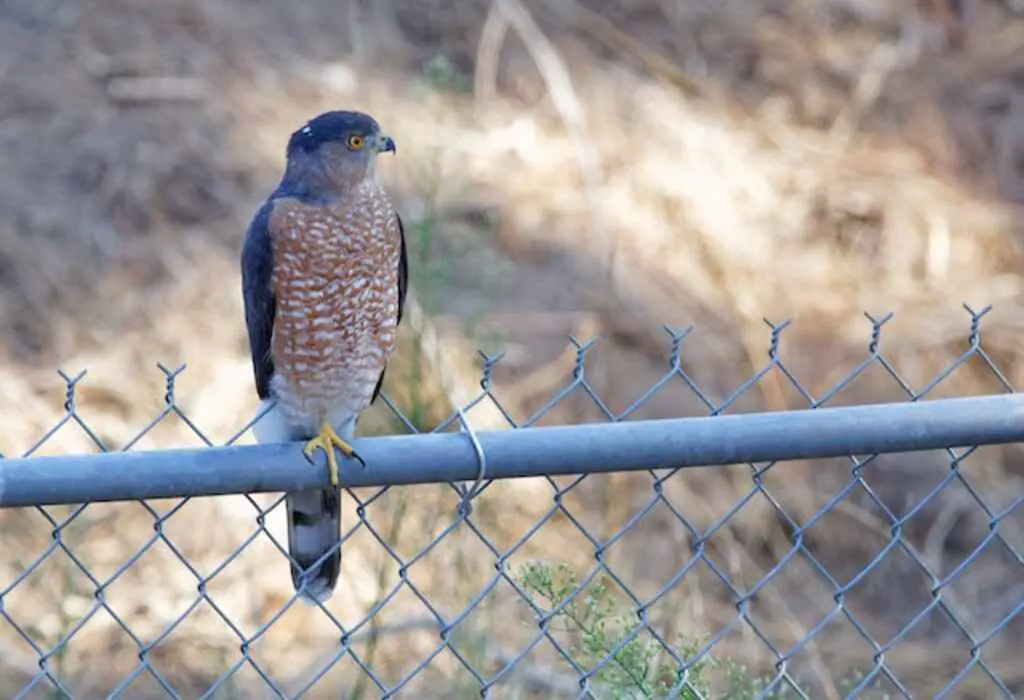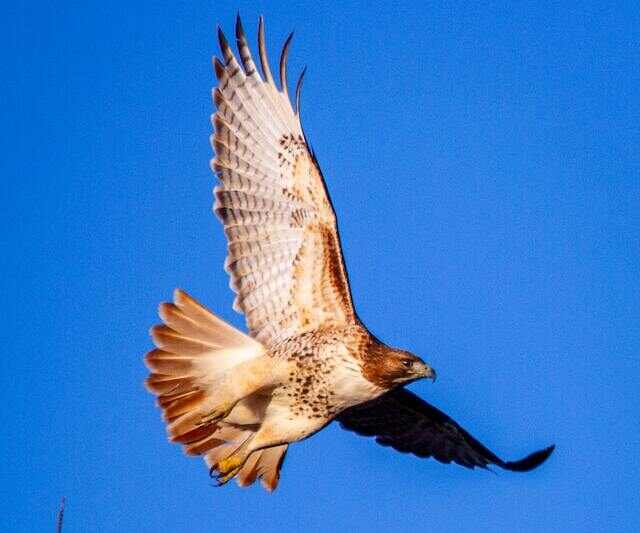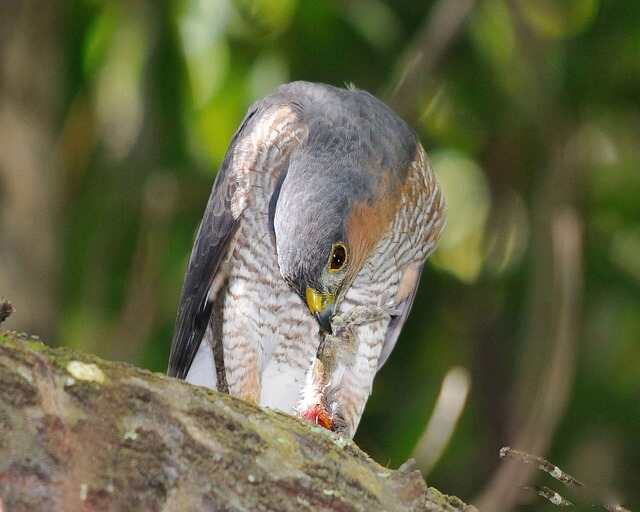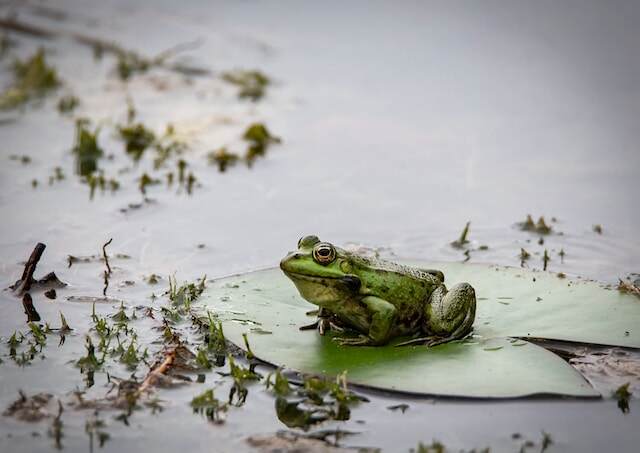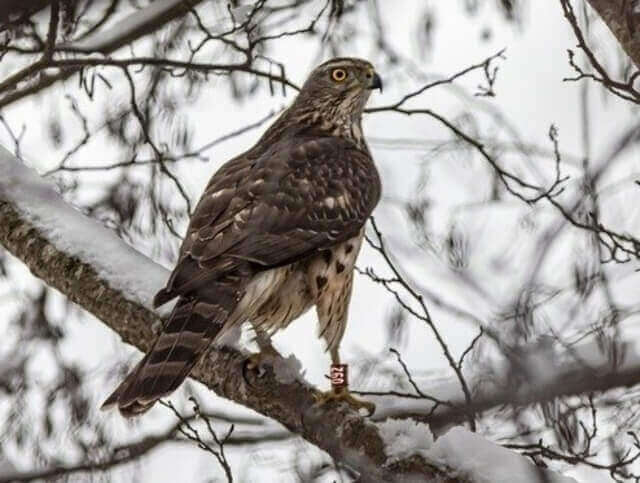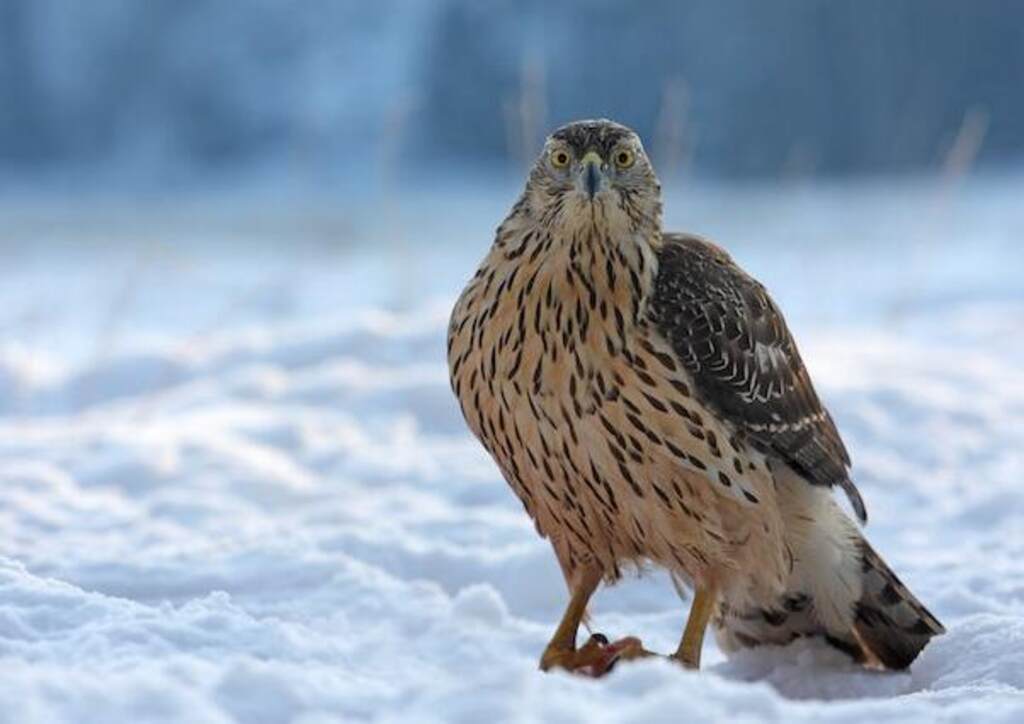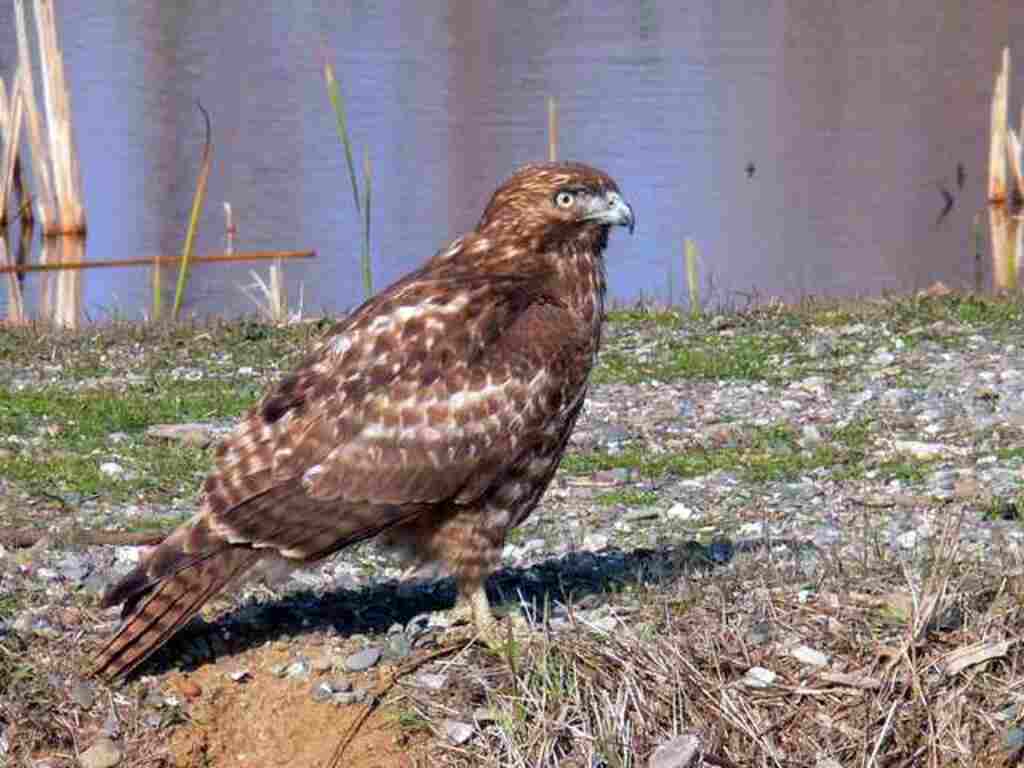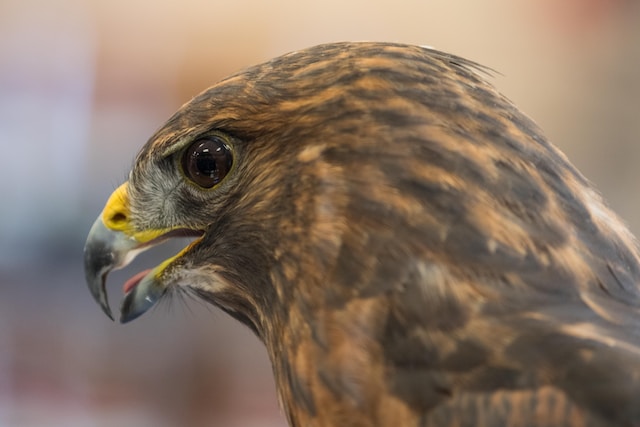Ribbit, ribbit! Have you ever wondered, “Do hawks eat frogs?” Well, it turns out these magnificent birds of prey have more in common with amphibians than you might think.
Prepare to dive into the captivating world of nature’s frog-hungry aerial acrobats as we uncover the surprising secrets of hawk dining habits.
Plus, stick around for some astonishing frog facts that will make you hop with excitement!
Table of Contents
- 1 The Basics: A Brief Overview of Hawks and Their Diet
- 2 So… Do Hawks Eat Frogs?
- 3 Types of hawks that eat frogs
- 4 Benefits of Eating Frogs for Hawks
- 5 Potential dangers for hawks when eating frogs
- 6 Interesting Facts About the Relationship Between Hawks and Frogs
- 7 Hawks as Natural Predators in Frog Populations
- 8 Frog’s Defense Mechanisms Against Hawk Attacks
- 9 Conclusion
- 10 FAQs: Do Hawks Eat Frogs?
- 10.1 Do hawks really eat frogs?
- 10.2 How do hawks catch frogs?
- 10.3 Are all hawk species known to eat frogs?
- 10.4 Why do hawks eat frogs?
- 10.5 Are frogs a significant part of a hawk’s diet?
- 10.6 Do hawks hunt frogs in water?
- 10.7 Are there any risks to hawks when eating frogs?
- 10.8 How often do hawks encounter frogs?
- 10.9 What other prey do hawks prefer over frogs?
- 10.10 Do hawks play a role in controlling frog populations?
- 11 Author
The Basics: A Brief Overview of Hawks and Their Diet
Hawks are magnificent birds of prey that rule the skies with their sharp talons and keen eyesight. They come in many different varieties, each with their own unique characteristics and hunting techniques.
Some of the most common types include the red-tailed hawk, Cooper’s hawk, and sharp-shinned hawk.
As predators, hawks have a diverse diet that can include anything from small mammals to reptiles and insects.
They are known for their incredible speed and agility when it comes to hunting, often catching their prey in mid-air or swooping down from above.
In general, hawks are opportunistic feeders that will eat whatever is available in their habitat.
However, there are certain types of prey that they prefer over others due to factors such as nutritional value or ease of capture.
So… Do Hawks Eat Frogs?
The short answer is yes! Many species of hawks have been known to eat frogs as part of their regular diet.
This may come as a surprise to some people, who typically associate hawks with larger prey such as rabbits or squirrels.
However, the reality is that frogs can be an excellent food source for hawks for a number of reasons.
For one thing, they are relatively easy to catch compared to some other types of prey due to the fact that they often stay still on land or in water.
Additionally, frogs provide good nutritional value for hawks since they contain high levels of protein and other vital nutrients necessary for survival.
Overall, while not every species of hawk will necessarily go out of its way to hunt frogs specifically, it’s definitely within the realm of possibility depending on factors such as habitat and availability.
So don’t be too surprised if you happen to spot a hawk snacking on a frog during your next nature hike!
Types of hawks that eat frogs
Hawks are known for their predatory nature, with a diet consisting mainly of small mammals and birds. However, some species like the Red-tailed hawk, Cooper’s hawk, and Sharp-shinned hawk also feed on frogs.
These hawks have adapted to hunt in diverse habitats and have developed unique hunting techniques to capture prey.
Red-tailed Hawk
The Red-tailed hawk is a large bird of prey commonly found in North America. It typically preys on rabbits, rodents, and snakes, but also feeds on amphibians like frogs.
They are often sighted near wetlands where they can easily catch their prey. The Red-tailed hawk has broad wings that help them soar at great heights as they survey the landscape for potential prey.
When hunting for frogs, the Red-tailed hawk usually swoops down from its high perch to snatch up its target with its sharp talons or beak.
It then uses its powerful grip to hold onto the frog while it tears it apart with its sharp beak.
Cooper’s Hawk
The Cooper’s hawk is a medium-sized bird of prey that primarily feeds on birds, but also eats small mammals and amphibians, including frogs.
This species is known for their speedy flight and agility in navigating through trees while hunting their prey.
Cooper’s hawks use different hunting techniques when targeting amphibians like frogs, depending on the location they inhabit.
In urban areas where wetlands are scarce, they may hunt around man-made ponds or birdbaths where these amphibians can be found.
Sharp-shinned Hawk
The Sharp-shinned hawk is a small bird of prey commonly found in North America that preys mainly on birds but also feeds on insects and reptiles including frogs.
They are known for their impressive flying skills, which allow them to navigate through dense forests in pursuit of their prey.
Sharp-shinned hawks usually hunt during the day when frogs are most active. They use their sharp vision to spot their targets from a distance before swooping down to snatch them up with their talons.
They are also known for their ability to fly at high speeds which makes it easier for them to catch fast-moving amphibians. Various species of hawks have adapted to eat frogs as part of their diet.
Red-tailed hawks, Cooper’s hawks, and Sharp-shinned hawks all have unique hunting techniques that allow them to capture this elusive prey.
Understanding the feeding habits and diets of these fascinating birds can help in preserving diverse ecosystems that support both predators and prey.
Hunting techniques: The Art of Catching Frogs
Hawks are skilled hunters that use various techniques to catch their prey, including frogs. They have developed specific strategies that allow them to successfully hunt and capture these slippery amphibians.
Depending on their respective species and location, hawks may use different hunting methods such as diving, swooping, or even walking.
One technique commonly used by hawks is called the stoop or dive-bombing. This method involves flying high above the ground and then suddenly diving towards the target at an incredible speed.
Hawks use this technique to surprise their prey and catch it off guard, making it easier to grab onto.
When it comes to catching frogs, hawks will typically swoop down towards them from above and snatch them up with their talons.
Another hunting strategy employed by hawks is perching in a strategic location near bodies of water where they know frogs are present.
From there, they can watch for movement or listen for sounds indicating a nearby frog and make a swift attack when one appears in range.
Swallowing Whole vs Tearing Apart
After capturing their prey, hawks must decide how to consume it. Many birds of prey swallow their food whole – this includes snakes, rodents, insects -and frogs are no exception.
However, some hawk species will tear apart their prey into smaller pieces before eating it.
Red-tailed hawks are known for swallowing their prey whole, as they have large beaks that are capable of stretching wide enough to fit an entire frog in one bite!
Meanwhile, Cooper’s Hawks tend to rip apart their prey before consuming it – this helps break down tough skin or bones for easier digestion.
Interestingly enough, Sharp-shinned Hawks fall somewhere between the two-sometimes swallowing whole but more often tearing apart larger prey like frogs first before consuming them fully.
Despite the large size difference between a hawk’s beak and a frog’s body, swallowing whole is actually an efficient way for hawks to consume their prey.
By consuming the entire frog, the hawk is able to extract all the nutrients it needs without wasting any parts.
In contrast, tearing apart their prey can help hawks assess meat that they might not normally be able to due to its size or toughness.
It also allows them to eat smaller portions at a time, which may be beneficial in areas where food sources are less abundant.
Overall, both methods have benefits depending on the type of prey and location of the hawk – and regardless of whether they swallow or tear apart their prey, hawks remain skilled hunters that play an important role in maintaining a balance in natural populations.
Benefits of Eating Frogs for Hawks
Nutritional Value
Frogs are a great source of nutrition for hawks. They are high in protein and low in fat, making them an ideal food source for predators like hawks. The protein content in frogs is comparable to that of chicken or fish, which are both great sources of protein as well.
Additionally, frogs contain a variety of vitamins and minerals, including vitamin A, vitamin B12, calcium, and iron. One interesting fact about the nutritional value of frogs is that their skin contains a special compound called dermaseptin.
This compound has been found to have antimicrobial properties that can help protect the frog from infection. When hawks eat frogs, they also benefit from this compound as it helps boost their immune system.
Abundance in Certain Habitats
Another benefit of eating frogs for hawks is that they are abundant in certain habitats. Frogs can be found in almost every continent and live in a variety of environments including rivers, ponds, swamps and forests.
In particular, wetland habitats such as marshes or swamps have high populations of amphibians like frogs which provide an ample food source for hawks during breeding seasons.
In some cases where water resources are limited during drier months, a concentration phenomenon occurs whereby many prey animals congregate around scarce water sources such as puddles; this too provides an easy opportunity for opportunistic hunters like hawks.
The Role Of Frogs In The Food Chain
Moreover – It may not seem obvious at first glance, but frogs play an important role within their ecosystems’ food chains.
They occupy a middle tier on the food chain between insects and mosquitoes on the bottom end and larger predators like birds or snakes at the top end.
This middle position means that when hawks eat frogs, they indirectly help control the populations of insects and other small pests by reducing their numbers.
This, in turn, helps maintain a balanced ecosystem and reduces competition between different species for resources.
The Importance of Calcium
Calcium is an essential mineral for many animals, including hawks. It is used to build strong bones and feathers, which are critical for flight and hunting. Fortunately for hawks, frogs are a great source of calcium.
Calcium is especially important during breeding season, when females require more calcium to produce eggs with strong shells that protect the developing embryo inside.
By eating frogs with high calcium content, hawks can ensure they have strong bones and feathers year-round.
Hawks as Indicators of Habitat Health
Hawks are top predators that rely on healthy ecosystems to survive.
Their diet includes various smaller prey items, but frogs specifically provide numerous nutritional benefits for these birds such as vitamins, minerals that improve their overall health, protein sources that enable muscle growth/maintenance needed for hunting, calcium crucial to bone strength/fertility as well as indirectly aiding in keeping food chain balance through controlling insect populations.
Therefore, when hawks have an ample supply of frogs to feed on it indicates there are healthy wetlands nearby; conversely, when the population availability declines it can serve as an indicator that ecosystems may be under stress from pollution or habitat destruction which could cause issues further up the food chain.
Potential dangers for hawks when eating frogs
Hawks have a diverse diet, but even they are not immune to the potential dangers of certain prey. When it comes to eating frogs, hawks must be cautious of toxic species that could harm them or even prove fatal.
Poisonous species
One of the most dangerous risks for hawks when consuming frogs is encountering a poisonous species. Certain types of brightly colored frogs are often avoided by predators due to their toxic skin secretions.
This includes poison dart frogs, which can produce highly toxic alkaloids that can cause paralysis or death in predators.
While some hawks have developed resistance to frog toxins over time, others may still suffer from negative effects after consumption.
For example, the red-shouldered hawk has been known to eat rough-skinned newts despite their toxicity, but this can sometimes lead to neurological problems or even death if too many are consumed.
The key takeaway is that while some species of frogs are safe for hawks to eat, others should be approached with caution and avoided if possible.
Parasites
In addition to toxicity concerns, hawks must also be wary of parasites that may be present in the bodies of their prey.
Frogs can sometimes carry parasites like flukes or tapeworms that can infect the digestive systems of animals like birds and cause health issues.
When consumed in large quantities over time, these parasites can lead to weakened immune systems and malnutrition in birds like hawks.
As such, it’s important for these raptors to maintain a varied diet rather than relying solely on one type of prey.
Avoiding danger through experience and adaptation
Hawk’s have evolved over time by adapting and learning from their mistakes. After eating a poisonous frog, the hawk’s digestive system undergoes a genetic mutation, which enables it to develop immunity to the toxin over time.
The hawk can then continue to eat such frogs without suffering any ill effects. Moreover, hawks have learned what to avoid through experience.
The red-shouldered hawk has learned how to avoid rough-skinned newts, which are highly toxic due to a toxin known as tetrodotoxin.
Hawks have also developed other ways of hunting frogs that eliminate risk of exposure – for example, some species of hawks will only hunt for frogs during particular times or seasons when certain species are not in abundance.
Conclusion
Hawks are skilled hunters that can adapt and learn from their environment. When it comes to eating frogs, they must be careful not only of toxic species, but also parasites that could harm their health over time.
Through experience and adaptation, hawks have found ways to minimize these risks and continue thriving in their ecosystems.
Interesting Facts About the Relationship Between Hawks and Frogs
When it comes to the relationship between hawks and frogs, there is a lot more than meets the eye. For starters, hawks play a critical role in frog populations by keeping their numbers in check.
This is because frogs are part of the diet for several species of hawks such as the red-tailed hawk, Cooper’s hawk, and Sharp-shinned hawk.
Interestingly enough, some species of frogs have evolved to develop defense mechanisms specifically against hawk attacks.
The green tree frog, for example, has adhesive pads on its feet that allow it to cling onto branches even when being attacked by predators.
Another fascinating fact about the relationship between hawks and frogs is that hawks don’t always eat every part of their prey.
In some cases, they may discard certain parts of the frog’s body if they find them unappetizing or difficult to digest.
Furthermore, research has shown that certain types of habitat are more favorable for hawks seeking out frogs as prey.
Wetland habitats such as ponds and marshes tend to have higher populations of frogs compared to dry woodlands or fields.
Ultimately, while there may be an element of danger involved when it comes to predation between these two species, there is also a complex web of interactions at play which highlights how interconnected different components within an ecosystem truly are.
Hawks as Natural Predators in Frog Populations
Hawks are known for their role as natural predators in many ecosystems around the world; however, their impact on frog populations specifically can be quite significant.
This is because many species of hawks rely on frogs as a primary food source throughout different stages of their life cycle.
For example, immature red-tailed hawks will often hunt near water sources where they can capture small amphibians such as tadpoles and young tree frogs.
On the other hand, adult hawks are better equipped to capture larger adult frogs, which may require more skill and experience when it comes to hunting techniques.
Additionally, while hawks play an important role in keeping frog populations at manageable levels, they can also pose a threat to other animals that live within the same ecosystem.
For example, if frog populations become too low due to predation by hawks or other predators, this can have a cascading effect on the rest of the food web.
Ultimately, while hawks may be seen as fearsome predators from a human perspective, their role in balancing ecosystems and maintaining biodiversity is crucial for the long-term health of many different habitats.
Frog’s Defense Mechanisms Against Hawk Attacks
While frogs may seem like helpless prey at first glance, many species have evolved unique defense mechanisms specifically designed to help them avoid being eaten by predators such as hawks.
Some of these defense mechanisms include:
– Camouflage: Certain species of frogs are able to blend into their surroundings seamlessly, which makes them harder for predators such as hawks to spot.
– Jumping: Frogs are known for their ability to jump great distances quickly and easily. This allows them to escape from danger quickly and efficiently.
– Poisonous skin secretions: Several species of frogs produce toxic skin secretions which can be fatal or harmful for predators who attempt to eat them. – Adhesive feet: Some species of frogs are able to cling onto surfaces tightly using adhesive pads on their feet.
This can prevent them from falling prey during an attack. Interestingly enough, some species of frogs have even been observed engaging in “mobbing” behavior when confronted with a predator such as a hawk.
This involves groups of frogs working together to intimidate or scare off the predator through loud vocalizations and aggressive posturing.
Ultimately, while there is always an element of danger involved when it comes to predation between different animal species within an ecosystem, the range of defense mechanisms that frogs have developed to avoid being eaten by hawks and other predators is a testament to the adaptability and resilience of these fascinating creatures.
Conclusion
Summary of Key Points
Throughout this article, we have explored the question of whether hawks eat frogs. We have discovered that not only do hawks eat frogs but they also have specific hunting techniques for catching them.
We learned about the types of hawks that consume frogs, including the red-tailed hawk, Cooper’s hawk, and sharp-shinned hawk. We also discussed how hawks catch and consume their prey.
Some species swallow whole while others tear apart their food. Additionally, we examined the benefits of eating frogs for hawks such as their nutritional value and abundance in certain habitats.
It is important to note that there are potential dangers for hawks when eating frogs such as poisonous species or parasites.
However, despite these risks, it is clear that consuming frogs is an important part of a hawk’s diet.
Reiteration That Yes, Hawks Do Indeed Eat Frogs
We can definitively answer the question posed at the beginning of this article: do hawks eat frogs? The answer is yes! In fact, eating frogs is a crucial component of a hawk’s diet.
While some may find it surprising or even unsettling to think about predators consuming another living creature in this way, it is simply part of nature’s cycle.
Hawks are natural predators and rely on a diverse diet to meet their nutritional needs.
So next time you see a hawk soaring overhead or perched atop a tree branch in search of prey, remember that they may be on the lookout for some tasty frog legs.
And while it may seem strange to us humans at times – it’s all just part of nature’s plan!
FAQs: Do Hawks Eat Frogs?
Do hawks really eat frogs?
Yes, hawks do eat frogs. While frogs may not be their primary prey, hawks have been known to include frogs in their diet.
How do hawks catch frogs?
Hawks use their sharp talons to snatch frogs from the ground or water. They rely on their excellent eyesight to spot and capture their prey.
Are all hawk species known to eat frogs?
Not all hawk species eat frogs, but many do. Red-shouldered hawks and Cooper’s hawks are examples of species known to include frogs in their diet.
Why do hawks eat frogs?
Hawks eat frogs because they provide a source of nutrition. Frogs offer hawks a readily available and relatively easy-to-catch food option.
Are frogs a significant part of a hawk’s diet?
Frogs are not typically a major part of a hawk’s diet. Hawks primarily feed on small mammals, birds, and reptiles, but they opportunistically consume frogs when available.
Do hawks hunt frogs in water?
Yes, hawks can hunt frogs both on land and in water. They may wait near bodies of water or hover above them to spot frogs and strike swiftly.
Are there any risks to hawks when eating frogs?
While frogs are a potential food source, they can also pose risks to hawks. Some frogs secrete toxins, and if consumed in large quantities, they may be harmful to the hawks.
How often do hawks encounter frogs?
The frequency of hawks encountering frogs varies depending on their habitat. Hawks living near water bodies or wetlands are more likely to come across frogs.
What other prey do hawks prefer over frogs?
Hawks prefer prey like mice, voles, small birds, and reptiles. These are more abundant and provide a higher caloric value compared to frogs.
Do hawks play a role in controlling frog populations?
Hawks, as predators, can help regulate frog populations by keeping their numbers in check. By preying on frogs, hawks contribute to the natural balance of ecosystems they inhabit.


